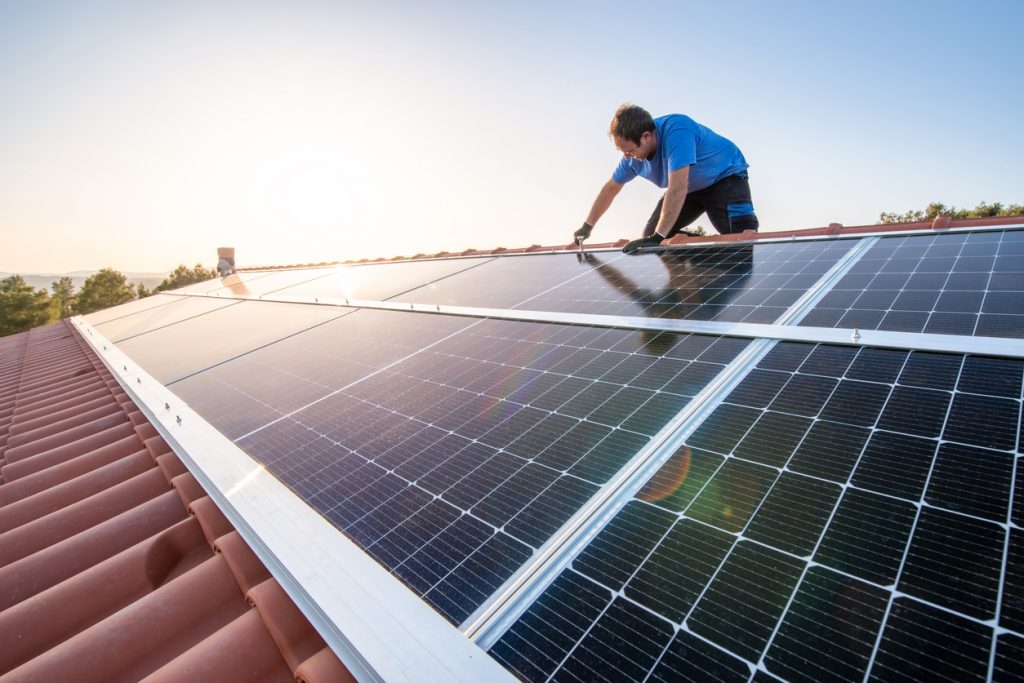Are you considering making the switch to solar for your home? Whether you’re someone who is environmentally conscious, or you just want to be more self-sufficient, there are a lot of solar panel options and configurations to consider to best fit your home or business. Regardless of the configuration, making the switch is a widely beneficial decision for both our environment and your wallet.
How Do Solar Panels Work?
The solar energy boom is upon us in the US. As are greatest and cleanest renewable energy resource, the energy gathered from the sun will be able to fuel our homes, appliances, and tech for as long as we continue to invest in solar technology. But how do solar panels work? We certainly owe our engineers and scientists a debt of gratitude for their hard work and research in progressing solar tech as far as it has come, because the process is scientifically quite complex. To oversimplify the process for those of us who aren’t physicists and engineers, solar energy conversion can be broken down in five steps:
- To receive adequate sunlight, solar panels are ideally installed on a high point of a roof or garage, covering most of the surface area to maximize energy absorption potential. The panels are made up of photovoltaic cells, which convert sunlight into DC power.
- The dark-colored panels absorb sunlight
- From the panels, DC power then runs into an inverter to convert DC electricity from the solar array to the usable AC electricity found in the building.
- The inverter feeds the electricity into an electrical distribution system to your building
What Are My Options When Converting to Solar Energy?
There are two types of solar panels offered: monocrystalline and polycrystalline panels. Both types will provide significant energy savings and minimal environmental impact, there are a few key discrepancies to note.
Mono Panels Key Facts:
- Made from monocrystalline cells or “wafers”
- Single cells = more efficient energy gathering
- Sleeker aesthetics
- Darker panel color = greater energy absorption
- A premium product, greater up-front cost per unit
Poly Panels Key Facts:
- Made from silicon instead of a single crystal
- Because of the panel’s “multi-crystalline” composition, efficiency is lower
- Easier manufacturing process due to simpler composition
- Very affordable option
An important note: in today’s day and age, polycrystalline panels are very outdated and not used anymore in professional solar panel installs. A solar panel dealer with integrity would never suggest using polycrystalline panels anymore. It is always important to be a smart consumer and explore your options, but in 2022, avoid poly panels at all costs. The best guidance is to ask explicitly, “Are these monocrystalline panels or poly?” and, “Is that stated clearly in my paperwork?”
As opposed to polycrystalline panels, monocrystalline panels allow for greater electron flow because the electrons have much more room to move. As a result, the monocrystalline cells are far more efficient than the polycrystalline options.
Regardless of which option you choose the choice to go solar with your energy supply is a choice that will benefit our planet and our environment. Poly panels are by no means inferior or undesirable compared to mono panels, just different. If you have questions or are looking to get started with a solar system, contact us today!
Works Cited:
https://skyfireenergy.com/how-do-solar-panels-work/
https://news.energysage.com/monocrystalline-vs-polycrystalline-solar/
https://www.ecowatch.com/solar/monocrystalline-vs-polycrystalline
https://www.forbes.com/advisor/home-improvement/monocrystalline-vs-polycrystalline-solar-panels/
https://unboundsolar.com/blog/monocrystalline-vs-polycrystalline-solar-panels





